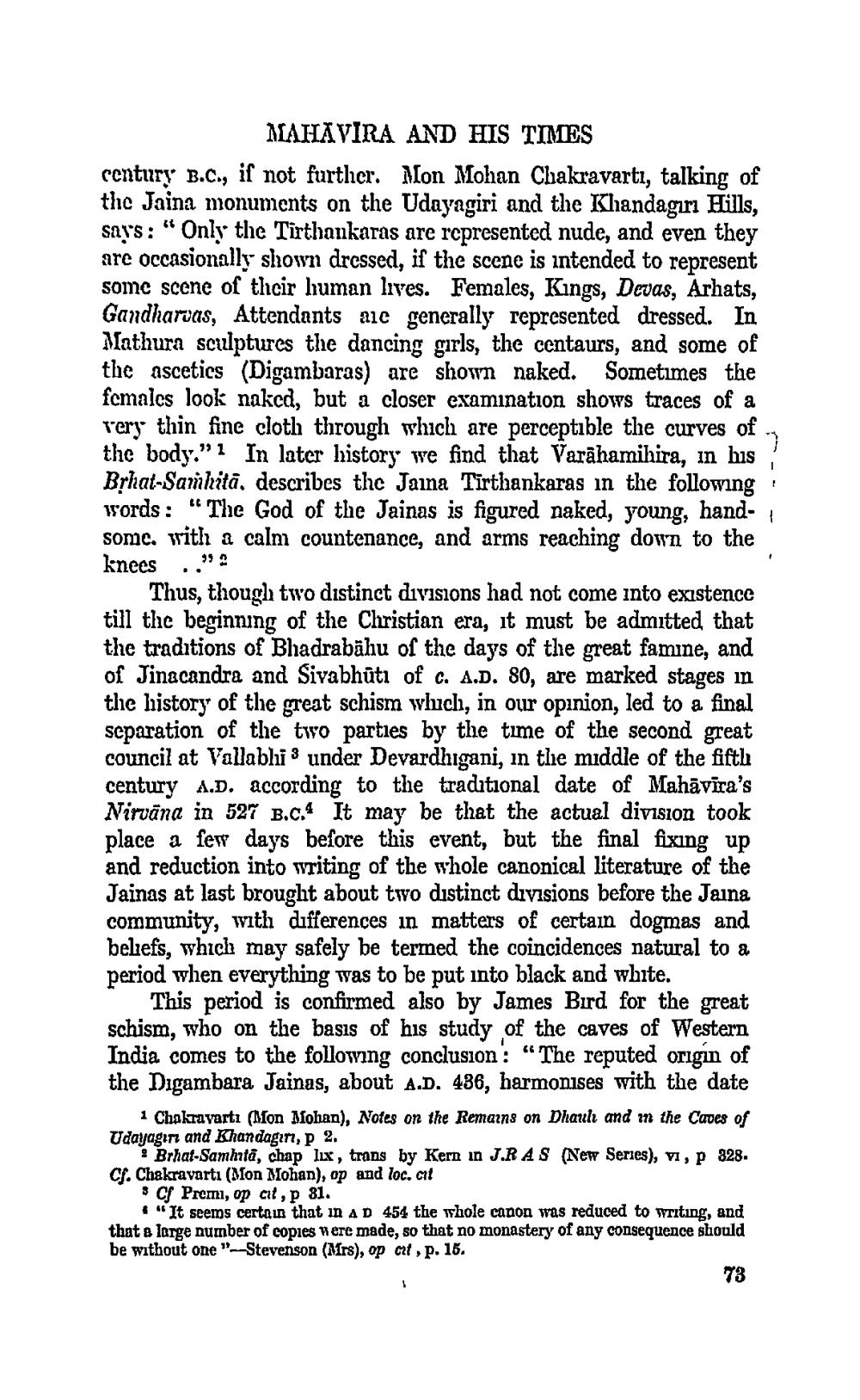________________ MLAHAYIRA AND HIS TIMES century B.C., if not further. Mon Mohan Chakravarti, talking of the Jaina monuments on the Udayagiri and the Khandagiri Hills, says: "Only the Tirthankaras are represented nude, and even they are occasionally shown dressed, if the scene is intended to represent some scene of their human lives. Females, Kings, Devas, Arhats, Gandharvas, Attendants are generally represented dressed. In Mathura sculptures the dancing girls, the centaurs, and some of the ascetics (Digambaras) are shown naked. Sometimes the females look naked, but a closer examination shows traces of a very thin fine cloth through which are perceptible the curves of the body." 1 In later history we find that Varahamihira, in his Brhat-Samhita, describes the Jaina Tirthankaras in the following: words: "The God of the Jainas is figured naked, young, handsomc, with a calm countenance, and arms reaching down to the knees .." Thus, though two distinct divisions had not come into existence till the beginning of the Christian era, it must be admitted that the traditions of Bhadrabahu of the days of the great famine, and of Jinacandra and Sivabhuti of c. A.D. 80, are marked stages in the history of the great schism which, in our opinion, led to a final separation of the two parties by the time of the second great council at Vallabluis under Devardhigani, in the middle of the fifth century A.D. according to the traditional date of Mahavira's Nirvana in 527 B.C. It may be that the actual division took place a few days before this event, but the final fixing up and reduction into writing of the whole canonical literature of the Jainas at last brought about two distinct divisions before the Jaina community, with differences in matters of certain dogmas and beliefs, which may safely be termed the coincidences natural to a period when everything was to be put into black and white. This period is confirmed also by James Bird for the great schism, who on the basis of his study of the caves of Western India comes to the following conclusion: "The reputed origin of the Digambara Jainas, about A.D. 436, harmonises with the date 1 Chakravarti (Don Bohan), Notes on the Remains on Dhaul and m the Caves of Udayagiri and Khandagini, p 2. Brhat-Samhata, chap lix, trans by Kern in J.RAS (New Series), vi, p 328. Cf. Chakravarti (Blon Mohan), op and loc. at *Cf Premi, op cit, p 81. " It seems certain that in AD 454 the whole canon was reduced to writing, and that a large number of copies were made, so that no monastery of any consequence should be without one "--Stevenson (Mrs), op cit, p. 16. 73




